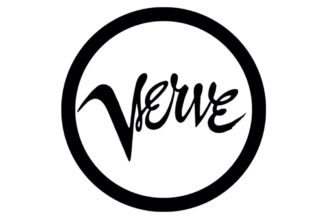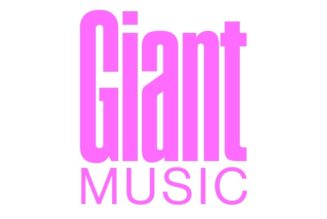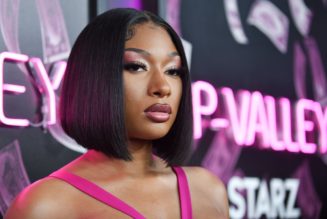In mid-2018, a team of Spotify employees were preparing a new, genre-less playlist — one of the first of its kind for the streaming service, which was shaking up the industry with its hit-making hip-hop playlist RapCaviar. But they couldn’t decide on a title and cover design that would encompass the playlist’s eclectic sound without putting a box around it.
“It was an eight-month saga,” Spotify North America team lead of music culture & editorial John Stein now remembers with a chuckle — until Spotify then-creative director Cecilia Azcarate began playing around with intricate, anatomical drawings of the insides of flowers.
“The word ‘pollen’ was thrown around, and we all liked how symmetrical it felt,” Stein says. “There’s a clear metaphor for the seeds of music, and pollen in the wind.”
Just like that, the puzzle was complete. Pollen made its quiet debut on Spotify on Sept. 7, 2018, with zero followers, a bare-bones description (“Introducing: Pollen”), and a cover image of fuzzy, flower-like cut-outs. The real revolution was in its tracklist, where Childish Gambino mingled with Joji, Blood Orange, BROCKHAMPTON and Disclosure.
Nearly two years later, the experiment has paid off. Pollen now has 1.3 million followers and Spotify says the playlist raked in 7.6 million streams in June 2020, a 10% jump from the same time last year. Pollen’s engagement metrics are even more impressive: Users spend an average of 30 minutes listening to the playlist, and in terms of save rate — meaning the percentage of listeners who save its songs to their personal Spotify libraries — Pollen sits in the top five amongst thousands of editorial playlists on Spotify.
In 2020, genre-blending is nothing new. But at the time Pollen was released, few editorial playlists embraced the idea — and Stein saw a hunger for it. “People were like, ‘Yeah, I listen to Kanye and I listen to Tame Impala,’” he says, “but we never put them on the same playlist.” The idea was to program Pollen as a brand that would reflect culture (as opposed to a list reflecting a genre’s big hits), with an audience full of young people who live for music discovery. “Growing up, you were a punk kid or a hip-hop kid, and that was your identity,” he says. “I don’t think that exists in the same way anymore.”
To create an early blueprint for the playlist, Stein turned to inspirations like the lineups for Tyler, the Creator’s annual Camp Flog Gnaw festival, which has included acts as wide-ranging as Billie Eilish and Men I Trust. But he also looked beyond music into the visual worlds of art and fashion. “We talked about, where are these people shopping? Who are the influencers they follow?” he says. A big influence was the celebrity photographer Petra Collins, whose dream-like, surreal aesthetic “represented a lot of what we were going for musically.”
Along the way, Pollen has become a powerful tool for developing artists to find fans, and often, a signal of music industry buzz. Pollen programs double the number of developing-level artists than the average Spotify editorial playlist, the company says, and includes artists with a range of monthly average listeners, from under 1,000 to upwards of 65 million.
“Every time I see one of my artists in the list, it’s extremely exciting,” says Ben Locke, the head of A&R and digital strategy at Warner Music-owned distributor Level, where he has worked with acts like Kate Bollinger and Remi Wolf. “It’s one of the few lists where you can find some of the biggest artists in the world next to artists who have only a handful of songs out, placed in a way that I think adds so much context and credibility to what you’re doing.”
Darkroom Records founder and CEO Justin Lubliner says that the playlist is crucial for acts like his flagship signee, Eilish, an artist known for fusing elements of pop, hip-hop and rock. “Before she was really popular, it was challenging to find her a home in the playlist world, because playlists were very genre-specific,” he says. “Pollen completes a big need for artists to feel comfortable remaining outside the box without feeling like they have to be confined by a specific playlist name.”
In fact, Spotify says that more than 280 distinct “micro-genres” tagged by its analytics system have appeared on Pollen, from “Mexican dream-pop” to “Chicago underground house.” And at a time when the music industry seems laser-focused on turning songs into viral moments, Lubliner says that Pollen provides a more artist-centric avenue to success.
“There’s a large reliance on virality and TikTok campaigns, and a lot of these big marketing campaigns are focused on taking music out of context — if a song does go viral, it’s around someone who’s doing a trend, but it doesn’t necessarily show that artist’s musicianship or aesthetic,” he says. “It’s very comforting to a label head to know that there are playlists out there where you don’t need a viral trend in order to get fans.”
RCA Records vp A&R Derrick Aroh pinpoints the moment he understood “the power of Pollen” as December 2019, when wistful BROCKHAMPTON single “SUGAR” was placed at the top of the list. “At the time, we were just starting to work the record on radio, and it was humming along,” he says. “And then Pollen hit a stride of people discovering the playlist, and the streaming uptick was crazy. Each day, the record was jumping 100,000 streams.”
He has also seen signees like Kaytranada and Goldlink make the playlist, which he compares to the mid-2010s heyday of music discovery blog Pigeons & Planes in terms of cultural cachet. “Pigeons & Planes had the weirdest artists [sonically], like FKA Twigs, but then there were also artists like a Cousin Stizz,” he says. “It had a certain cool factor, like, ‘These people need to check you out, because you’re here.’” Sire Records director of A&R Preston Rodie offers another analogy: “I equate [placement on Pollen] to having an album featured on an end cap at a record store 15 years ago,” he says. “It doesn’t replace artist development but it certainly provides additional exposure and hopefully increases listenership.”
These days, Stein — who oversees strategy and curation for Spotify’s U.S. editorial playlists — says he selects new songs to program mainly through Spotify’s playlist submission tool. But because that system receives more than 20,000 submissions daily, he also relies on niche treasure troves, like Twitter’s meme-maker-slash-rap-connoisseur @ShrekRap, to find fresh sounds. “There are 10,000 hip-hop accounts on Twitter where people just argue about, like, best Kendrick [Lamar] verses,” he says. All the while, he’s keeping an ear out for the unusual: “When something’s confusing in a good way,” he says, “I’ll always try to take another listen and make a note.”
Unlike other Spotify playlists, which have stricter schedules, Stein says he updates Pollen whenever he feels inspired or thinks it needs a refresh, and songs can remain on the playlist for as long as listeners seem to enjoy them. Recently, Stein has been excited about the Virginia-based singer Kate Bollinger (whom he describes as “if Norah Jones came out in 2018 making bedroom pop”) and British artist BAKAR, whose unexpectedly joyful song “Hell N Back” has remained on Pollen since August 2019.
Thanks in a large part to the success of Pollen, Spotify is leaning more heavily into the playlist-as-brand. In early 2019, Spotify introduced Lorem, an only ever-so-slightly pop-leaning playlist which recently featured acts like BENEE and Remi Wolf, with the open-ended description “what does Lorem mean to u?” Another of Stein’s favorites is the genre-less playlist Oyster, where listeners can discover the best artists of the Nordic region — like finding a pearl inside an oyster. He also helped launch the genre-agnostic On Our Radar playlist, which incorporates insights from all North American editors.
For R&R Records and Mixed Management co-founder Ben Persky, the adoption of these playlists is “promising.” “I think it says that music is often connected more by aesthetic or cultural through lines than sonics themselves,” he says. “And that while there is obviously a huge audience for the top 100 records in the world, there is an emerging subsection of music lovers who are more passionate about finding music off the beaten path.”
The goal is for these brands to live beyond digital screens, too. Spotify announced Oyster alongside Studio Oyster, a companion studio program for Nordic artists to record and release new music. Stein says that before the coronavirus pandemic, he was having conversations about launching Pollen events, and has even received Pollen-branded merchandise hand-crafted by fans and addressed to the company’s New York office — some of whom he’d like to one day hire to create official versions.
Now, Stein reflects back on the early days of Pollen like a scientist testing a hypothesis. “There was a lot of skepticism around it, understandably,” he says. “It’s good to see that there’s a core audience there — that it can work, and speak to the culture, instead of just reflecting a genre.”










